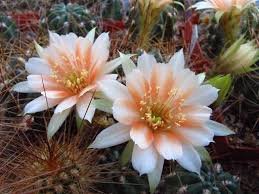Chinese poetry, with its long and rich tradition spanning thousands of years, is known for its depth, emotional intensity, and sophisticated use of language. Throughout the centuries, poets in China have often turned to nature, mythology, and societal norms to explore themes of love, beauty, and gender. Central to many of these poems is the depiction of femininity, which is often symbolized through various metaphors, allegories, and imagery. The feminine symbols in Chinese poetry have not only celebrated the beauty and grace of women but have also reflected the complexities and challenges that women face in Chinese society.
This article explores the feminine symbols in Chinese poetry, shedding light on how female figures, both real and mythical, are represented in poems and how their symbolic meanings have evolved. It also examines how poets have used symbols of nature, animals, and cultural figures to capture the essence of femininity and to reflect the changing roles of women throughout Chinese history.
1. The Cultural Context of Feminine Symbolism in Chinese Poetry
To fully appreciate the feminine symbols in Chinese poetry, it is important to understand the cultural context in which these symbols emerged. Chinese poetry, particularly classical poetry, has been shaped by Confucian values, which emphasize harmony, order, and respect for social hierarchies. For much of Chinese history, women were viewed through the lens of Confucian ideals, which placed them in roles defined by virtue, submission, and grace. As a result, the feminine symbols in poetry often represented these ideals.
However, poetry in China also served as a space for subtle critique and personal expression. Through the use of imagery and metaphor, poets could communicate more complex ideas about women and femininity. Whether describing the beauty of a beloved or lamenting the plight of a woman trapped by societal expectations, poets used the symbolic language of nature and myth to explore both the ideals and limitations of femininity.
2. The Lotus: A Symbol of Purity and Grace
One of the most enduring feminine symbols in Chinese poetry is the lotus flower, which holds deep cultural significance in China. The lotus has long been associated with purity, beauty, and spiritual transcendence, qualities that align with the Confucian ideal of the virtuous woman. The lotus blooms in muddy waters, yet remains untainted, symbolizing the ability of a woman to maintain her purity and virtue despite the hardships and challenges of life.
In poetry, the lotus often represents the ideal woman — delicate, yet resilient. For example, in the famous poem “The Lotus” by Li Bai (701–762), the lotus flower serves as a metaphor for unattainable beauty and grace, qualities admired and idealized in women. The poem’s portrayal of the lotus as both fragile and transcendent is symbolic of the dual nature of feminine beauty — both ethereal and rooted in reality.
The lotus also symbolizes rebirth and renewal, much like the mythic cycles of women’s roles in society. It is through its connection to spirituality and purity that the lotus became an essential symbol in Chinese poetry, embodying the grace and strength expected of women, as well as their capacity for moral and personal transformation.
3. The Peach Blossom: A Symbol of Love and Romance
Another important feminine symbol in Chinese poetry is the peach blossom. The peach blossom has been associated with romantic love, youthful beauty, and the fleeting nature of life. In classical poetry, the peach blossom often appears as a symbol of feminine charm and romantic desire. The short-lived blossoms of the peach tree emphasize the transient beauty of youth and the ephemeral nature of love — a theme that resonates deeply with traditional Chinese concepts of time and impermanence.
In the poem “Peach Blossom Fan” by the famous poet Kong Shangren (1648–1718), the peach blossom becomes a metaphor for the fleeting nature of love and the passage of time. The poem tells the story of a love affair that is doomed to fade, much like the short-lived beauty of the peach blossom. The poem evokes the emotional complexity of love, portraying it as something both beautiful and tragic.
The peach blossom also has associations with femininity in the context of marriage and fertility. In ancient China, peach blossoms were sometimes used in weddings, symbolizing both the blossoming of love and the fertility of women. Through the lens of poetry, the peach blossom stands as a symbol of the delicate balance between beauty, love, and the transience of life.
4. The Moon: A Symbol of Loneliness and Separation
In Chinese poetry, the moon is another prominent symbol of femininity. The moon is often associated with the feminine due to its cyclical nature, as well as its soft, pale light. In traditional Chinese cosmology, the moon is linked to the feminine principle of Yin, representing qualities such as intuition, passivity, and receptivity, which were valued in Confucian ideals of womanhood.
The moon’s symbolism in poetry often evokes a sense of longing and separation, particularly in the context of love. Poems frequently depict the moon as a solitary figure, reflecting the loneliness and isolation of women, particularly those who are separated from their loved ones. For example, in “The Night of Separation” by Li Bai, the moon is used as a metaphor for distance and yearning. The poet uses the moon’s pale light to symbolize the lover’s sadness as she waits for her partner, separated by time and space.
The moon also appears in poems that lament the challenges women face, particularly during the Tang Dynasty (618–907), when the role of women was largely confined to the domestic sphere. The moon symbolizes both the beauty and the solitude that often accompanied the feminine experience in ancient China. In this way, the moon becomes a powerful metaphor for both the idealized and the marginalized aspects of femininity.
5. The Willow Tree: A Symbol of Elegance and Vulnerability
The willow tree is another recurring symbol of femininity in Chinese poetry. Known for its graceful, drooping branches, the willow is often associated with beauty, softness, and elegance. The willow’s delicate appearance also symbolizes vulnerability, as its branches are easily swayed by the wind. This fragility, however, can also be seen as a metaphor for strength — the willow tree bends but does not break, much like the women in Chinese poetry who endure hardship yet remain poised and dignified.
In poems such as “The Willow and the Pipa” by Wang Wei (699–759), the willow tree becomes a metaphor for the emotional depth and inner strength of the feminine spirit. The tree’s flexibility and grace are symbolic of the ways in which women adapt to and endure difficult circumstances, while also maintaining their dignity and beauty.
The willow tree also appears in poems that evoke themes of longing and separation. Its drooping branches often symbolize the melancholic emotions of women who are separated from their lovers or families. In this sense, the willow tree represents both the beauty and the sadness that often accompany feminine experience.
6. The Crane: A Symbol of Longevity and Transcendence
The crane, a bird known for its long lifespan and graceful movements, is another powerful symbol of femininity in Chinese poetry. In many ancient texts, the crane is seen as a symbol of transcendence, spirituality, and immortality. The crane’s elegance and poise reflect the ideal qualities of feminine grace, while its association with longevity represents the enduring strength and resilience of women.
The crane also holds connotations of wisdom and grace. In poems from the Song Dynasty (960–1279), such as “The Crane” by Su Shi, the crane is used to symbolize the intellectual and spiritual qualities that women possess. The poem emphasizes the crane’s ability to fly high above the earthly realm, mirroring the aspirations of women to rise above the constraints of society and reach higher planes of existence and understanding.
The crane’s association with immortality and grace also reflects the desire for women to be remembered for their contributions to society, both within their families and beyond. It is a powerful metaphor for the lasting impact that women can have on the world, despite the often transient nature of their lives.
7. Conclusion: The Enduring Symbolism of Femininity in Chinese Poetry
Feminine symbols in Chinese poetry are rich with meaning, reflecting the many facets of women’s lives, both in their beauty and their struggles. From the purity of the lotus to the fleeting romance of the peach blossom, these symbols have served as a means for poets to express their reverence for women, while also capturing the complexities of the feminine experience. Through the use of nature, animals, and cultural figures, Chinese poets have created a vivid tapestry of imagery that continues to resonate with readers today.
As Chinese society has evolved, so too have the representations of femininity in poetry. While earlier poems often idealized women, later works have sought to explore the nuances of their experiences, offering a more multifaceted view of women’s roles in society. Nonetheless, the enduring presence of feminine symbols in Chinese poetry speaks to the timeless and universal nature of the feminine spirit — a force of beauty, strength, and resilience that continues to inspire generations of poets and readers alike.










